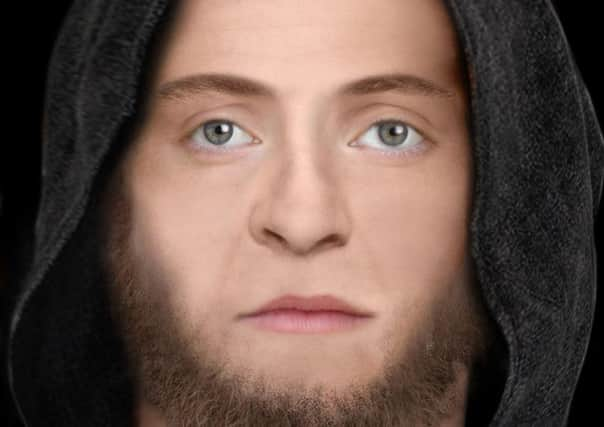The faces of some of Edinburgh’s earliest inhabitants revealed


Forensic artists have joined forces with archaeologists to recreate the look of a man buried around 900 years ago.
The remains of the man were discovered during a series of digs beneath St Giles Cathedral, on the Royal Mile, in the 1980s and have been kept in Edinburgh City Council’s official archives since then.
Advertisement
Hide AdAdvertisement
Hide AdForensic facial reconstruction work has also been carried out on the face of a woman believed to have been suffering from leprosy.
Her remains were discovered in the most recent burial ground, which dates back to the 16th century and was inside the cathedral, indicating she was a businesswoman of “high status..”
St Giles,’ which pre-dates the construction of most of the Old Town, dates back to 1124, when it was built to serve the newly-declared royal burgh of Edinburgh under the reign of King David I.
The images have been created under a joint project between Edinburgh City Council and the Centre for Anatomy and Human Identification at Dundee University.
Previous work overseen by the council has seen dozens of facial reconstructions carried out on the remains of bodies dating back to the 14th century which were dug up during construction work on the Edinburgh tram project.
Nearly 400 bodies covering a period of more than 350 years were found beneath a main road next to a historic churchyard in Leith during a six-month dig in 2009. The St Giles’ digs, which began in 1981 and continued over various phases for another 12 years, led to the first major archaeological study which was carried out in the area.
The work covered the site of several burial grounds, which were created as the cathedral gradually expanded over several hundred years.
Advertisement
Hide AdAdvertisement
Hide AdA total of 111 bodies were discovered during the digs, with the remains found to have dated from the 12th century to the 16th century.
The official report stated: “For more than 450 years, St Giles’ served as the parish burial ground for the whole of the burgh, with burials inside for the wealthy and privileged, and outside for the greater part of the population.”
John Lawson, the city council’s archaeologist, said: “We are revisiting a lot of old cases like this one as we are very keen to put human faces on a lot of the human remains we have in our collections.
“These were really important excavations when they were carried out as some of the remains date back to when Edinburgh became a royal burgh at the start of the 12th century, when St Giles’ was first constructed. But the church you see today was a lot bigger than what was originally on the site.
“We’ve got five very distinct graveyards, each covering about 100 years, with the earliest dating from the very foundation of Edinburgh as we know it today. They were its first official inhabitants.”
Forensic artist Lucrezia Rodella, who worked on the 12 century’s man’s facial reconstruction, said: “It is of a man aged between 35 and 45, who was around 5.6ft tall. The interesting yet challenging part was dealing with a missing lower jaw.
“Even with the cranium intact and only a few teeth missing, without the lower part of the face an accurate reconstruction was a lot harder. In order to hide the jaw line, I decided to add a beard.”
Advertisement
Hide AdAdvertisement
Hide AdKaren Fleming, who worked on the facial reconstruction of the woman with leprosy, added: “Being able to physically examine the remains has been fascinating and has provided a great insight into the lives of our common ancestors.
“This particular reconstruction interested me as there were obvious signs of leprosy which made for interesting research. The skull is that of a middle-aged female between 35 and 45 years old.
“She would have contracted this in adulthood and the signs of lesions under the right eye may have led to the loss of sight in that eye.
“Buried within St Giles’ Cathedral, next to the altar of St Anne, indicates that she had high status, possibly within the Tailors Guild.”